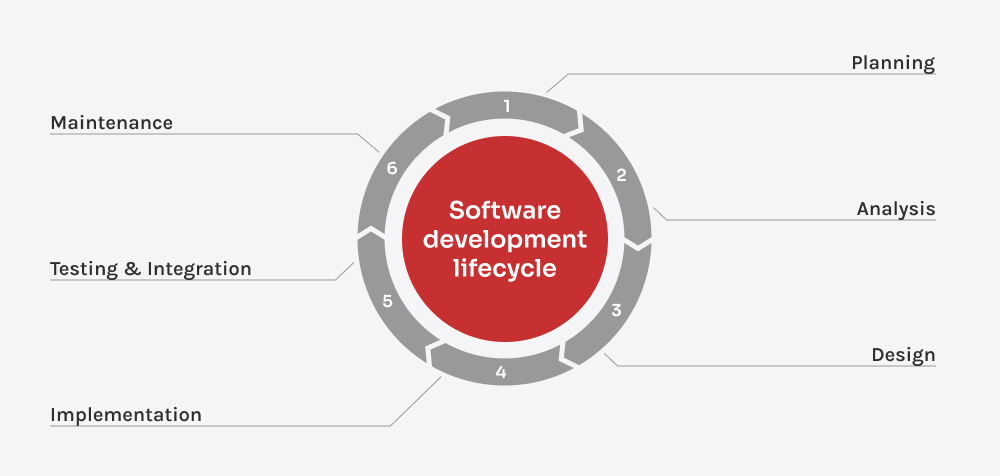Software development can often feel like navigating a complex maze. Without a clear roadmap, projects can easily go astray, leading to missed deadlines, budget overruns, and ultimately, a product that doesn’t meet user needs. This is where the Software Development Life Cycle (SDLC) comes in. The SDLC provides a structured framework, a step-by-step guide, that helps teams build high-quality software efficiently and effectively. In this comprehensive guide, we’ll explore the SDLC, its various models, and why it’s crucial for successful software development.
What is the SDLC?
The Software Development Life Cycle (SDLC) is a process used for planning, creating, testing, and deploying information systems. It outlines the various stages involved in developing a software product, from the initial idea to its final release and maintenance. Think of it as a blueprint for building software, ensuring that all the necessary steps are taken in the right order.
Why is the SDLC so important? Because it brings structure and predictability to the development process. By following a defined SDLC, development teams can:
- Improve project planning: The SDLC facilitates better estimation of time and resources.
- Reduce costs: Early identification of issues minimizes expensive rework later in the project.
- Improve software quality: Testing is integrated throughout the SDLC, ensuring a robust and reliable product.
- Increase stakeholder satisfaction: Clear communication and collaboration are emphasized, leading to a product that meets user expectations.
Common SDLC Models:
Over the years, various SDLC models have emerged, each with its own strengths and weaknesses. The choice of model depends on the specific project requirements, team expertise, and other factors. Here are some of the most popular SDLC models:
- Waterfall Model: This is the traditional, linear approach. Each phase is completed before moving on to the next. It’s simple to understand but can be inflexible if changes are needed later in the project.
- Agile Model (Scrum, Kanban): Agile methodologies emphasize iterative development, frequent feedback, and close collaboration. The software is developed in short cycles (sprints), allowing for flexibility and adaptation to changing requirements. Scrum and Kanban are popular implementations of Agile.
- V-Model: The V-Model is an extension of the Waterfall model that emphasizes testing at each stage of development. It highlights the relationship between development and testing activities.
- Spiral Model: This model is risk-driven. It focuses on identifying and mitigating risks throughout the development process. It’s often used for complex projects with high risk factors.
- Iterative and Incremental Model: This model develops the software in increments, with each release adding new features and functionality. It combines aspects of both the waterfall and iterative approaches.
- Rapid Application Development (RAD): RAD focuses on rapid prototyping and frequent user feedback to accelerate development. It’s often used for projects with tight deadlines.
A General Overview The Phases of the SDLC
While specific phases and their names might vary slightly depending on the chosen SDLC model, the following general phases are common across most approaches:
- Planning/Requirements Gathering: This crucial initial phase involves defining the project scope, identifying user needs, and documenting requirements. It’s about understanding what the software needs to do and who it’s for. (Learn more about this critical first phase in our upcoming blog post dedicated to requirements gathering!)
- Design: In this phase, the system architecture, user interface, database design, and other technical aspects are planned. It’s about how the software will work.
- Implementation/Development: This is where the actual coding and building of the software takes place. Developers write the code, and the system is constructed based on the design specifications.
- Testing: Testing is essential to ensure software quality. Different types of testing are performed to identify bugs, defects, and other issues.
- Deployment: Once the software is tested and approved, it’s deployed or released to users. This can involve installing the software on user machines or deploying it to a server.
- Maintenance: After deployment, the software needs ongoing support, bug fixes, updates, and enhancements. Maintenance ensures that the software continues to function correctly and meets evolving user needs.
Choosing the Right SDLC Model:
Selecting the appropriate SDLC model is critical for project success. Consider these factors:
- Project size and complexity: Larger, more complex projects might benefit from models like the spiral or V-model.
- Team experience: Teams with less experience might start with simpler models like waterfall or iterative.
- Client requirements: Client preferences and project constraints can influence the choice of model.
- Risk tolerance: Projects with high risks require models that prioritize risk management, such as the Spiral Model.
Benefits of Using an SDLC:
The SDLC offers numerous advantages:
- Improved project management: provides a clear structure and roadmap for the development team.
- Reduced risks and costs: Early planning and testing help identify and mitigate potential problems.
- Higher-quality software: Testing throughout the process ensures a robust and reliable product.
- Increased stakeholder satisfaction: Clear communication and collaboration lead to a product that meets user needs.
The SDLC as a Roadmap to Success:
The SDLC is an indispensable tool for software development. It provides a structured framework that helps teams build high-quality software efficiently and effectively. By understanding the different SDLC models and phases, development teams can choose the right approach for their projects and maximize their chances of success. Stay tuned for our next blog post, where we delve deeper into the crucial first phase of the SDLC: requirements gathering!




